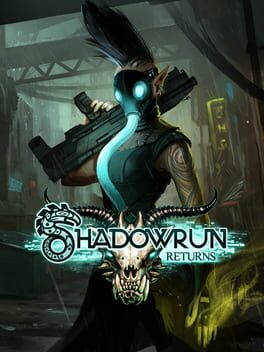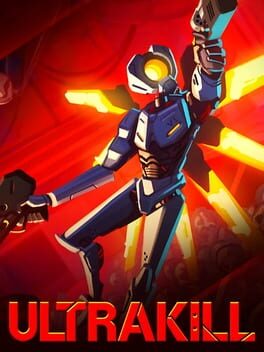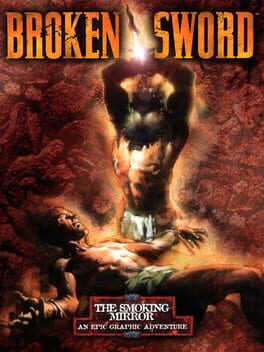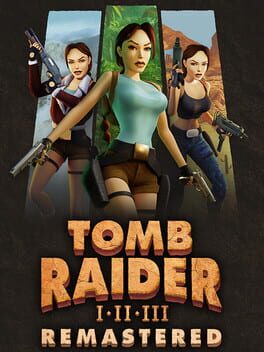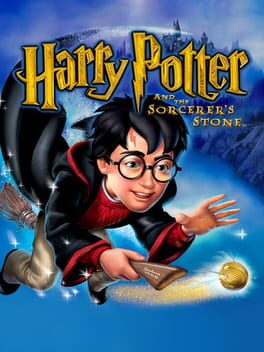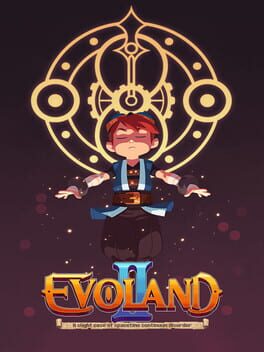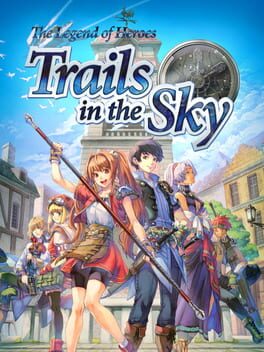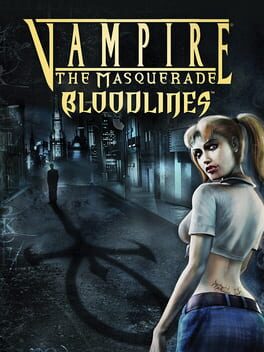tonycaponey
146 reviews liked by tonycaponey
Shadowrun Returns
2013
Shadowrun is honestly one of the coolest tabletop RPG settings, and this is a worthy CRPG adaptation, though it’s definitely flawed. The actual gameplay is pretty solid, if standard, tactical CRPG, though the UI could be better, the story is pretty good overall, though some dialogue comes off as clunky, the music’s nice, if some tracks repeat way too often, and the thing that’s best to me is how much it oozes the dark, cyberpunk atmosphere of the setting. One of the most glaring aspects, and one that’s brought up fairly often, is the fact that this game’s story is really short, and it is: but given that the game’s generally pretty cheap, and regularly goes on pretty generous sales, I can look past it. And the workshop is chock full of free custom campaigns that tend to be pretty fantastic. This is far and away the weakest of the Shadowrun CRPG trilogy, but that doesn’t make it bad.
Shadowrun Returns
2013
I remember playing this game around the time of its launch for a couple hours or so, being mesmerized by its brand of hard boiled sci-fi dystopia. It's not hard to see why I was so enthralled by it back then: the first 5-6 hours successfully introduces an interesting world where the advancement of man-made tech is equally matched, if not exceeded, by the occult and the supernatural. Gameplay wise, despite lacking in tutorials, the design starts simple enough to ease you in, but not too simple to bore you. Not to mention the cast of decently written, colorful characters that you are being subjected to.
But the depth in those aspects are quite lacking, especially as you reach a certain chapter where things start to get quite wild, story-wise. The progression of the story's scale and stakes in the 2nd act already feels a bit sudden and unnatural on its own. But combined by all the side characters not being fleshed out enough, the disappointingly same-y level and encounter design, and a unwelcomed difficulty spike in this act, I can't help but feel a bit disappointed with how they executed the game's second half. It almost feels rushed.
A big part of why I loved the first half of the game is how well the game introduces all sorts of interesting lore through its main missions, while maintaining this delightful detective vibe in its gameplay. From delving into Seattle's drug addict woes, to dealing with dead spirits in order to gain their testimony of an event nobody else saw, there's all sorts of stuff happening in the 1st act that I really enjoyed. You don't have to figure the story out yourself, but the CRPG gameplay of exploring thoroughly to fully scope out all your options fits perfectly with its premise of trying to figure out who killed your old friend. Even if the gameplay possibilities and options aren't that extensive (it's a relatively small scale game after all), the act of playing detective and getting yourselves some allies along the way is still a fun endeavor. The 2nd and 3rd act unfortunately doesn't have quite the same level of variety and memorability.
The RPG systems are pretty decent for the most part. Outside of combat, the various stats serve mostly to unlock certain dialogues options or pathways that usually will save you a minute or two of your time, and in the sense of their usefulness, there is a lot of room to improve on. Coupled with the somewhat cramped level design, it can feel more like a linear story rather than a CRPG. But executing these bonus options still feel satisfying.
In regards to combat, these systems feel more fleshed out, since the abilities and bonuses you'll get for advancing in the game's various combat stats feel much more helpful. For example, being able to mark a target to temporarily increase the chance of hitting them by advancing the Decking stats, and combining that with abilities such as full-auto assault rifle attacks. But do note that the combat follows the XCOM system of hit percentages, so be prepared for utter frustration as you miss attacks with 90% hit chance.
All in all, Shadowrun Returns feels more like a prelude of what's to come, rather than a completely realized idea. Still, I did have a fun time playing it, and I will be checking out the sequels someday to see if they ever get to fulfill this game's potential.
But the depth in those aspects are quite lacking, especially as you reach a certain chapter where things start to get quite wild, story-wise. The progression of the story's scale and stakes in the 2nd act already feels a bit sudden and unnatural on its own. But combined by all the side characters not being fleshed out enough, the disappointingly same-y level and encounter design, and a unwelcomed difficulty spike in this act, I can't help but feel a bit disappointed with how they executed the game's second half. It almost feels rushed.
A big part of why I loved the first half of the game is how well the game introduces all sorts of interesting lore through its main missions, while maintaining this delightful detective vibe in its gameplay. From delving into Seattle's drug addict woes, to dealing with dead spirits in order to gain their testimony of an event nobody else saw, there's all sorts of stuff happening in the 1st act that I really enjoyed. You don't have to figure the story out yourself, but the CRPG gameplay of exploring thoroughly to fully scope out all your options fits perfectly with its premise of trying to figure out who killed your old friend. Even if the gameplay possibilities and options aren't that extensive (it's a relatively small scale game after all), the act of playing detective and getting yourselves some allies along the way is still a fun endeavor. The 2nd and 3rd act unfortunately doesn't have quite the same level of variety and memorability.
The RPG systems are pretty decent for the most part. Outside of combat, the various stats serve mostly to unlock certain dialogues options or pathways that usually will save you a minute or two of your time, and in the sense of their usefulness, there is a lot of room to improve on. Coupled with the somewhat cramped level design, it can feel more like a linear story rather than a CRPG. But executing these bonus options still feel satisfying.
In regards to combat, these systems feel more fleshed out, since the abilities and bonuses you'll get for advancing in the game's various combat stats feel much more helpful. For example, being able to mark a target to temporarily increase the chance of hitting them by advancing the Decking stats, and combining that with abilities such as full-auto assault rifle attacks. But do note that the combat follows the XCOM system of hit percentages, so be prepared for utter frustration as you miss attacks with 90% hit chance.
All in all, Shadowrun Returns feels more like a prelude of what's to come, rather than a completely realized idea. Still, I did have a fun time playing it, and I will be checking out the sequels someday to see if they ever get to fulfill this game's potential.
Genuinely the best feeling 3D platformer I've played innnnnn gotta be at least 5 years. It's, just, pouring out the seams with charm and earnest love, to the point where the polish feels homemade with its partly-crusty lining. Sometimes for woe though, of course, like when the geometry can ~occasionally~ disagree with your particular momentum and existence. Otherwise it feels as clean as it should be!
It has the makings of doing the Super Mario Odyssey flowchart of hat-tricking, but with detours and digressions from that linear track, encouraged both for score and conserving momentum. Sonic but not-quite-Sonic sprinklings on top, and that all flows together phenomenally. What's altogether more stunning though is it's the only work of its ilk that bothers to really have "level design." There's real guidance through its stages in a way that lets you go absolutely hogwild with its toolkit without ever being 'too open' or 'too constrained.' You can reasonably skip as much as you'd like to by mastering the speed of yo-yo tricks well enough, but there's always some things you Need to do. It's so super encouraging of going for the One-Combo 100% run through its stages, to the point where I actually went and did a few. I can't say a game like this has done that to me! It helps that the music is so bouncy and blissful, and stages never outstay their welcome to where the prospect of "you need to do this entire stage again" is a "absolutely hun let's do even better this time".
My only ~real~ issue is that the swinging and twirling, sadly, lacks enough bite, at least for me. I don't think there's a single stage or moment where the game challenged me, and this is AFTER doing every bonus stage. Sure I can do the one-combos and those can be difficult but with all the skips it's only really as hard as I let it be? Even though it's not uncharacteristic for such a clearly soft platformer, I find myself so unsatisfied with the lengths the game really went to, especially when the final boss was more of a wet fart than a real demonstration of the game's skills, or like, your performance as an artist!!! Give it an encore! A real spicy star road!
It has the makings of doing the Super Mario Odyssey flowchart of hat-tricking, but with detours and digressions from that linear track, encouraged both for score and conserving momentum. Sonic but not-quite-Sonic sprinklings on top, and that all flows together phenomenally. What's altogether more stunning though is it's the only work of its ilk that bothers to really have "level design." There's real guidance through its stages in a way that lets you go absolutely hogwild with its toolkit without ever being 'too open' or 'too constrained.' You can reasonably skip as much as you'd like to by mastering the speed of yo-yo tricks well enough, but there's always some things you Need to do. It's so super encouraging of going for the One-Combo 100% run through its stages, to the point where I actually went and did a few. I can't say a game like this has done that to me! It helps that the music is so bouncy and blissful, and stages never outstay their welcome to where the prospect of "you need to do this entire stage again" is a "absolutely hun let's do even better this time".
My only ~real~ issue is that the swinging and twirling, sadly, lacks enough bite, at least for me. I don't think there's a single stage or moment where the game challenged me, and this is AFTER doing every bonus stage. Sure I can do the one-combos and those can be difficult but with all the skips it's only really as hard as I let it be? Even though it's not uncharacteristic for such a clearly soft platformer, I find myself so unsatisfied with the lengths the game really went to, especially when the final boss was more of a wet fart than a real demonstration of the game's skills, or like, your performance as an artist!!! Give it an encore! A real spicy star road!
Shin Megami Tensei
1992
Shin Megami Tensei
1992
This is a favorite series of a few friends of mine that I've always been too intimidated to touch. The SMT series has always seemed super hard and unforgiving in ways that have made me too scared to engage with it, but I finally decided to take the plunge and see just why my friend likes them so much. With lots of pointers from my friends DogStrong and Fii, I was able to make it through to the end of the Japanese version of the game. It took me about 40 hours to beat the game with the neutral ending. I played it on the Switch Online Super Famicom service with liberal usage of rewinds and save states, because heckin' damn does this game hate you sometimes XD
SMT is the third game in the series but it's the first in the series (as I understand it) to take the concept and tell its own story rather than be beholden to the original books in a meaningful way. You start out as just a normal teenager in Tokyo who wakes up one day to see a message on your computer from Steven [Hawking], who has discovered demons living in the internet and has made a program to allow people to befriend and summon them. From there, a whirlwind of things happen (you're falsely arrested for murder, the Japanese Self Defense Force initiates a coup, the American military initiates a counter attack, America launches ICMBs and ends the world) that lead you eventually to walking through a ruined Tokyo trying to make sense of exactly what these forces of Law and Chaos are doing and how you can affect it.
While I could spend all day explaining the details of the story itself, the broad strokes of the story are a combat between the forces of Law and Chaos for control of a world gone to ruin. You can alter your alignment via certain story actions, and where you ultimately end up decides which fate the world will take. Law, Chaos, or a neutral route siding with neither. SMT 1 does have characters other than yourself who have important roles, but none of them really have arcs or meaningful character writing. The bigger narrative in SMT is the philosophical discussion at hand between the forces of Law and Chaos, and how your actions determine which side of that equation you fall on. It's a really interesting and deep game for 1992, and I found it very engaging, even if character writing is much more usually my thing.
The gameplay of SMT is that of Megami Tensei but more refined, that system being that which originated monster catching and fighting. You have your main character (whom I named SMTCHAMP) who can summon demons but not use magic, and then you have several other NPCs who join and leave your party throughout the story who learn a bit of magic instead of having your computer powers of summoning demons. It has a simple armor and weapons system, melee weapons for single targets and guns (and different types of often status-inflicting ammo) for groups, and a leveling system where instead of gradual stat increases, you pick one of your six stats (strength, intelligence, magic, vitality, agility, and luck) to put a point into to raise your stats a certain way. This leads to level ups not really being that important in and of themselves, but ultimately having a lot of influence on your power level.
Your level is also very important because it affects which demons you can summon and fuse, as that's a lot of the bread and butter of the game. Most demons you encounter can be engaged with in conversation instead of fighting them. Once you talk them down, you get to a negotiating menu where you can ask for all sorts of things (money, friendship, magnetite (which we will get to later)), and they generally want some kind of currency or amount of healing items to join your party. Once they join you, they are in a stagnent position. This isn't Pokemon. A demon is exactly as powerful when they join you as they will ever be. You get level ups; they don't. What you do when you want stronger demons but don't want to befriend new ones (or abandon old friends) is go to the demon summoning Dark Church, where you can fuse demons into new and more powerful ones. SMT overall isn't a super hard game compared to a lot of the later (and earlier) games in its series, but making sure you have the right demons for the fight at hand is key to victory in many fights, especially in the early game.
The fights themselves play out surprisingly well for a game this old. Enemies generally only appear one type at a time but with several members of that group of demons (one to eight members). You can't specify which of these you want your party to attack, but the allied AI is often very good at focusing down wounded enemies, avoiding enemies who are stunned or have a status making fighting otherwise impossible for them, and there's even feedback on the screen to show you which of the enemy mob in particular are being damaged. It's a really well done battle system that I was routinely surprised by the robustness of. There's even an auto-battle system to help you through the game's absolutely nuts encounter rate (which is often pretty brutal), and the auto battle even remembers if you last used melee or guns to keep fighting like that!
The main meat of the gameplay outside of combat is first-person dungeon crawling. Now I know that sounds like somewhat of a nightmare, especially given that virtually all areas in a particular dungeon don't look terribly memorable or distinct from one another, but the game does the best it can to mitigate that. As you go through an area, you fill out an automatic map in your arm-terminal computer that you use to summon demons. You can check this map whenever you want, and it helps a lot with getting lost. Checking it is a bit cumbersome, but it's certainly better than having no map at all.
The game, however, has a fair few issues that make it pretty difficult to go back to if you aren't using rewinds and save states. Demons can only be summoned and befriended if you're the right alignment. Law can't summon Chaos and vice versa, but neutral can summon anybody. This wouldn't be so bad if it weren't so hard to change your alignment or check what actually influences it (alignment management is one of the most important reasons to have a reference guide open for the game, imo), so you can suddenly be Chaos and not even realize it because you did one thing wrong, and there are only so many scripted opportunities to shift your alignment again before you're just out of options and stuck on the route you're on. Thankfully, you can check your alignment on the overworld whenever you want by checking which way your little marker is spinning (or wobbling in place, if you're neutral), but alignment management and the way it affects gameplay is a bit of a pain.
Another BIG problem is player information. Spells have effects, weapons have complicated stats (how many times they hit, what statuses they do or don't inflict, whom they can be wielded by), and items have effects to. There is not a single mechanism in-game for you to learn what ANY of these things are. Giving the player the information they need to even make basic choices outside of sheer trial and error is a remnant of design philosophy from when this game came out that I am SO happy has died out of popular usage.
Another big issues is that the game can just be very mean when it comes to punishing you for mistakes you couldn't have seen coming. The start of the game in particular (basically until the ICBMs drop) is a really rough time where getting ambushed by a group of tough enemies that happen to hang around Shinjuku means you're just dead unless you run (if you even CAN run). The dungeons in the game can also be really mean in how they put floor traps, invisible pit falls, and invisible teleports around. The dungeon design can be very mean in how they mostly just seem put together to waste both your time and resources before you can get to the big boss at the end. These points of meanness don't exactly make it unique among JRPGs at the time, not even close, but it's one more thing that makes this a pain to go back to in 2021.
The presentation of the game is very nice, if a bit simple at times. The game doesn't have many musical tracks, but what's there fits the dreary, desolate tone well. The graphics are very nice in some places, and more boring in others. Environments are generally very dull and repetitive, while monster designs are often very cool and distinct, especially when it comes to bosses. You can tell Atlus is still getting its sea legs in regards to the Super Famicom, but they're already more than halfway there to a winning formula.
Verdict: Hesitantly Recommended. This is a mean game that is also super cool and fun when it isn't making you curse at the pitfall you just fell down or the paralysis trapped you just stepped on for the third time. The philosophy in the story is engaging and the monster fights and capturing are unique and fun, and if you can get past just how much of a bully the game can be at times, there's a lot to enjoy here. These days, I think the most easy way to enjoy the game is to be able to save state or rewind to brute force your way through those pit falls and traps whenever you want, but to each their own on that point. SMT is a series I was scared to ever try, but after how much fun I had with it, but I'm really glad I gave it a shot, and you just might be too~
SMT is the third game in the series but it's the first in the series (as I understand it) to take the concept and tell its own story rather than be beholden to the original books in a meaningful way. You start out as just a normal teenager in Tokyo who wakes up one day to see a message on your computer from Steven [Hawking], who has discovered demons living in the internet and has made a program to allow people to befriend and summon them. From there, a whirlwind of things happen (you're falsely arrested for murder, the Japanese Self Defense Force initiates a coup, the American military initiates a counter attack, America launches ICMBs and ends the world) that lead you eventually to walking through a ruined Tokyo trying to make sense of exactly what these forces of Law and Chaos are doing and how you can affect it.
While I could spend all day explaining the details of the story itself, the broad strokes of the story are a combat between the forces of Law and Chaos for control of a world gone to ruin. You can alter your alignment via certain story actions, and where you ultimately end up decides which fate the world will take. Law, Chaos, or a neutral route siding with neither. SMT 1 does have characters other than yourself who have important roles, but none of them really have arcs or meaningful character writing. The bigger narrative in SMT is the philosophical discussion at hand between the forces of Law and Chaos, and how your actions determine which side of that equation you fall on. It's a really interesting and deep game for 1992, and I found it very engaging, even if character writing is much more usually my thing.
The gameplay of SMT is that of Megami Tensei but more refined, that system being that which originated monster catching and fighting. You have your main character (whom I named SMTCHAMP) who can summon demons but not use magic, and then you have several other NPCs who join and leave your party throughout the story who learn a bit of magic instead of having your computer powers of summoning demons. It has a simple armor and weapons system, melee weapons for single targets and guns (and different types of often status-inflicting ammo) for groups, and a leveling system where instead of gradual stat increases, you pick one of your six stats (strength, intelligence, magic, vitality, agility, and luck) to put a point into to raise your stats a certain way. This leads to level ups not really being that important in and of themselves, but ultimately having a lot of influence on your power level.
Your level is also very important because it affects which demons you can summon and fuse, as that's a lot of the bread and butter of the game. Most demons you encounter can be engaged with in conversation instead of fighting them. Once you talk them down, you get to a negotiating menu where you can ask for all sorts of things (money, friendship, magnetite (which we will get to later)), and they generally want some kind of currency or amount of healing items to join your party. Once they join you, they are in a stagnent position. This isn't Pokemon. A demon is exactly as powerful when they join you as they will ever be. You get level ups; they don't. What you do when you want stronger demons but don't want to befriend new ones (or abandon old friends) is go to the demon summoning Dark Church, where you can fuse demons into new and more powerful ones. SMT overall isn't a super hard game compared to a lot of the later (and earlier) games in its series, but making sure you have the right demons for the fight at hand is key to victory in many fights, especially in the early game.
The fights themselves play out surprisingly well for a game this old. Enemies generally only appear one type at a time but with several members of that group of demons (one to eight members). You can't specify which of these you want your party to attack, but the allied AI is often very good at focusing down wounded enemies, avoiding enemies who are stunned or have a status making fighting otherwise impossible for them, and there's even feedback on the screen to show you which of the enemy mob in particular are being damaged. It's a really well done battle system that I was routinely surprised by the robustness of. There's even an auto-battle system to help you through the game's absolutely nuts encounter rate (which is often pretty brutal), and the auto battle even remembers if you last used melee or guns to keep fighting like that!
The main meat of the gameplay outside of combat is first-person dungeon crawling. Now I know that sounds like somewhat of a nightmare, especially given that virtually all areas in a particular dungeon don't look terribly memorable or distinct from one another, but the game does the best it can to mitigate that. As you go through an area, you fill out an automatic map in your arm-terminal computer that you use to summon demons. You can check this map whenever you want, and it helps a lot with getting lost. Checking it is a bit cumbersome, but it's certainly better than having no map at all.
The game, however, has a fair few issues that make it pretty difficult to go back to if you aren't using rewinds and save states. Demons can only be summoned and befriended if you're the right alignment. Law can't summon Chaos and vice versa, but neutral can summon anybody. This wouldn't be so bad if it weren't so hard to change your alignment or check what actually influences it (alignment management is one of the most important reasons to have a reference guide open for the game, imo), so you can suddenly be Chaos and not even realize it because you did one thing wrong, and there are only so many scripted opportunities to shift your alignment again before you're just out of options and stuck on the route you're on. Thankfully, you can check your alignment on the overworld whenever you want by checking which way your little marker is spinning (or wobbling in place, if you're neutral), but alignment management and the way it affects gameplay is a bit of a pain.
Another BIG problem is player information. Spells have effects, weapons have complicated stats (how many times they hit, what statuses they do or don't inflict, whom they can be wielded by), and items have effects to. There is not a single mechanism in-game for you to learn what ANY of these things are. Giving the player the information they need to even make basic choices outside of sheer trial and error is a remnant of design philosophy from when this game came out that I am SO happy has died out of popular usage.
Another big issues is that the game can just be very mean when it comes to punishing you for mistakes you couldn't have seen coming. The start of the game in particular (basically until the ICBMs drop) is a really rough time where getting ambushed by a group of tough enemies that happen to hang around Shinjuku means you're just dead unless you run (if you even CAN run). The dungeons in the game can also be really mean in how they put floor traps, invisible pit falls, and invisible teleports around. The dungeon design can be very mean in how they mostly just seem put together to waste both your time and resources before you can get to the big boss at the end. These points of meanness don't exactly make it unique among JRPGs at the time, not even close, but it's one more thing that makes this a pain to go back to in 2021.
The presentation of the game is very nice, if a bit simple at times. The game doesn't have many musical tracks, but what's there fits the dreary, desolate tone well. The graphics are very nice in some places, and more boring in others. Environments are generally very dull and repetitive, while monster designs are often very cool and distinct, especially when it comes to bosses. You can tell Atlus is still getting its sea legs in regards to the Super Famicom, but they're already more than halfway there to a winning formula.
Verdict: Hesitantly Recommended. This is a mean game that is also super cool and fun when it isn't making you curse at the pitfall you just fell down or the paralysis trapped you just stepped on for the third time. The philosophy in the story is engaging and the monster fights and capturing are unique and fun, and if you can get past just how much of a bully the game can be at times, there's a lot to enjoy here. These days, I think the most easy way to enjoy the game is to be able to save state or rewind to brute force your way through those pit falls and traps whenever you want, but to each their own on that point. SMT is a series I was scared to ever try, but after how much fun I had with it, but I'm really glad I gave it a shot, and you just might be too~
Ultrakill
2020
A bit of a disclaimer, this game is in early access and by the time of this review, only Prelude + Act 1 is out for it.
Although that doesn't matter, there's really no reason not to pick it up. The game holds options to satisfy every single part of the action fps spectrum. Every single enemy design is used spectacularly, every arena is a fun roller coaster to constantly position and shoot at enemies from, and the continuous aggression leads to a nonstop thrill. Weapons have great utility and distinct use between each other, and your movement toolkit is especially impressive with dash jump, slide jumps, and combining those two to get a pseudo-bunnyhop
And in a genre rife with really bad bosses, Ultrakill manages to even break that expectation, grinding it into dust as it takes cues out of the best bosses of other games and combines them into incredible encounters. A couple bosses in particular remind me heavily of Vergil, down to somewhat similar uses of attacks.
It's definitely the best FPS that's come out this year, even if it's not exactly finished. I'll have a lot more to say and analyze when Act 2 and 3 release, but for now I can't recommend Ultrakill enough.
Although that doesn't matter, there's really no reason not to pick it up. The game holds options to satisfy every single part of the action fps spectrum. Every single enemy design is used spectacularly, every arena is a fun roller coaster to constantly position and shoot at enemies from, and the continuous aggression leads to a nonstop thrill. Weapons have great utility and distinct use between each other, and your movement toolkit is especially impressive with dash jump, slide jumps, and combining those two to get a pseudo-bunnyhop
And in a genre rife with really bad bosses, Ultrakill manages to even break that expectation, grinding it into dust as it takes cues out of the best bosses of other games and combines them into incredible encounters. A couple bosses in particular remind me heavily of Vergil, down to somewhat similar uses of attacks.
It's definitely the best FPS that's come out this year, even if it's not exactly finished. I'll have a lot more to say and analyze when Act 2 and 3 release, but for now I can't recommend Ultrakill enough.
Spirittea
2023
I had a lot of fun with this one and I do adore the series. The characters are amusing as ever, the art style gorgeous and the world full of details.
Unfortunately, I did like this a bit less than the first game for a couple of reasons: Some parts of the story seem a bit... disjointed. You play as both Nico and George and sometimes, the transition between the two is a bit awkward, mainly because of clumsy time jumps.
In addition to that, a few puzzles proved to be more tedious than fun (looking at you, maze puzzle). I'm a bit ashamed to admit that I had to look up a walkthrough once because I just couldn't wrap my head around the insane point & click adventure logic that the game was throwing at me.
Still, The Smoking Mirror is a great experience that had me hooked from the start. It's fun and nostalgic and really one of the best adventure games out there.
Unfortunately, I did like this a bit less than the first game for a couple of reasons: Some parts of the story seem a bit... disjointed. You play as both Nico and George and sometimes, the transition between the two is a bit awkward, mainly because of clumsy time jumps.
In addition to that, a few puzzles proved to be more tedious than fun (looking at you, maze puzzle). I'm a bit ashamed to admit that I had to look up a walkthrough once because I just couldn't wrap my head around the insane point & click adventure logic that the game was throwing at me.
Still, The Smoking Mirror is a great experience that had me hooked from the start. It's fun and nostalgic and really one of the best adventure games out there.
Disco Elysium
2019
Disco Elysium is a reminder. A painful one at that.
No, not a reminder of what we knew. It always comes in bouts, that stumbling around attempting to find meaning in the world that is painted in garish colors of conflict and ideologies that tear us apart, that harsh critique of what we are capable of as people. The ways our lives are completely connected in ways that drive us to the brink of despair, building towards a pale that rips at the edges of the world before the whole book cracks at the seams and turns the paper to shreds. No, that's nothing new.
That's something any cynical mindset could create really, even if they had the prose as excellent as this game did, or the character writing this painstakingly real. That's doable. What it really reminds me of, is our emotions, yknow that feeling thing. That helps us really understand each other at our core, is how we as people can live. Living with the loss, the many many many casualties not just personal but also in our own heads. Or as Disco Elysium really well puts it by the end after a long long conversation, "dealing with all this shit." At the end of the day, we're capable of understanding each other, and you don't need to drink yourself to the point of amnesia just so you can find the steps to get there.
That definitely sounds more verbose than a game which painfully relies too much on the odds of sentences landing with a roll of the dice may deserve, but this work was fucking profound to me. Compared to my earlier impressions, of which I really did look like the bumbling cop nihilistically walking away thinking all of it was worthless, I find myself hoping that everyone I know gets around to playing this.
No, not a reminder of what we knew. It always comes in bouts, that stumbling around attempting to find meaning in the world that is painted in garish colors of conflict and ideologies that tear us apart, that harsh critique of what we are capable of as people. The ways our lives are completely connected in ways that drive us to the brink of despair, building towards a pale that rips at the edges of the world before the whole book cracks at the seams and turns the paper to shreds. No, that's nothing new.
That's something any cynical mindset could create really, even if they had the prose as excellent as this game did, or the character writing this painstakingly real. That's doable. What it really reminds me of, is our emotions, yknow that feeling thing. That helps us really understand each other at our core, is how we as people can live. Living with the loss, the many many many casualties not just personal but also in our own heads. Or as Disco Elysium really well puts it by the end after a long long conversation, "dealing with all this shit." At the end of the day, we're capable of understanding each other, and you don't need to drink yourself to the point of amnesia just so you can find the steps to get there.
That definitely sounds more verbose than a game which painfully relies too much on the odds of sentences landing with a roll of the dice may deserve, but this work was fucking profound to me. Compared to my earlier impressions, of which I really did look like the bumbling cop nihilistically walking away thinking all of it was worthless, I find myself hoping that everyone I know gets around to playing this.
At the time of my review I have completed Tomb Raider 1 and 2 in their entirety and am about to start on III. So far I am incredibly satisfied with this collection, as it makes my favorite game series instantly playable without having to deal with the nasty ass PS1 load times or the incredible flimsiness of the PC Ports. Unfortunately, for as long as they made me wait for this thing I'm kind of stunned at how bare bones the whole thing really is.
I want to state first and foremost that the use of A.I artwork is deplorable. I understand this game was no doubt made with a woeful budget by an overworked team, so I'm going to direct my anger more towards the publisher for not giving these games the respect they deserve to have a proper art team remastering the visuals. As it stands, the remastered visuals largely clash with the original artistic intent, don't line up properly along the grids, and generally look cheaper than the original's, as the original game was textured by artists and not a piece of shit A.I.
I am also annoyed at the OG visuals having a frame cap on them, allegedly due to animations being locked to 30 for the old visuals. Even though there are PC Ports available right now that have those same visuals at 60 FPS. There is no reason these games should be stuck at 30 FPS, unless the Switch was having too much trouble running these games, which I would believe.
I also lament the loss of save crystals, which I hypothesized could have been a fun difficulty adjuster for long-time fans of the series, as the save crystals made Tomb Raider 1 and 3 very intense games when you can't save scum through them. Tomb Raider 2 is borderline impossible without save scumming so there no change there.
I think the asking price for some fantastic games is worth it, even though I resent the business practices being used within the package. I also don't anticipate all the terrible discussion we are in for about how these games aged by guys who are obsessed with fucking Pokemon or whatever. If you enjoy these types of games there is a nice handy package here to play them, which honestly, is what I've been dying for for years.
I want to state first and foremost that the use of A.I artwork is deplorable. I understand this game was no doubt made with a woeful budget by an overworked team, so I'm going to direct my anger more towards the publisher for not giving these games the respect they deserve to have a proper art team remastering the visuals. As it stands, the remastered visuals largely clash with the original artistic intent, don't line up properly along the grids, and generally look cheaper than the original's, as the original game was textured by artists and not a piece of shit A.I.
I am also annoyed at the OG visuals having a frame cap on them, allegedly due to animations being locked to 30 for the old visuals. Even though there are PC Ports available right now that have those same visuals at 60 FPS. There is no reason these games should be stuck at 30 FPS, unless the Switch was having too much trouble running these games, which I would believe.
I also lament the loss of save crystals, which I hypothesized could have been a fun difficulty adjuster for long-time fans of the series, as the save crystals made Tomb Raider 1 and 3 very intense games when you can't save scum through them. Tomb Raider 2 is borderline impossible without save scumming so there no change there.
I think the asking price for some fantastic games is worth it, even though I resent the business practices being used within the package. I also don't anticipate all the terrible discussion we are in for about how these games aged by guys who are obsessed with fucking Pokemon or whatever. If you enjoy these types of games there is a nice handy package here to play them, which honestly, is what I've been dying for for years.
1 list liked by tonycaponey
